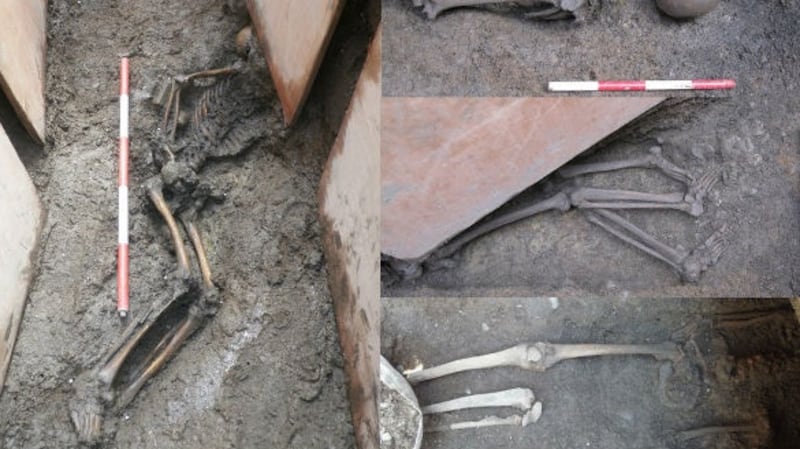For more than 500 years the remains of a young man, no older than 35, lay in a mass grave under what is now Dublin’s College Green.
His skeleton and that of four other people were found in August 2014 by archaeologists excavating for the new Luas cross city works. They were found located in what was once Hoggen Green, one of Dublin's three main medieval commonages.
They had all died young. Four were remains of teenagers no older than 17; the fifth was that of a man who was aged between 25 and 35.

Their skeletal remains suggest that they were poor with evidence of malnutrition and hard manual labour.
Precise radiocarbon dating suggests that all the burials date to the Tudor period between 1485 and 1603.
Fortunately for archaeologists the older man’s skull was so well preserved that it was possible to do 3D digital facial reconstruction.
That process was carried out by Professor Caroline Wilkinson and a team at Liverpool John Moore's University.
Facial muscles
By taking a 3D scan of the skull, they built up the facial muscles, soft tissue and skin.
They were also able to determine from samples taken from his teeth that he most likely lived all his life and died in Dublin.
The addition of a beard and long hair was “science meets art”, according to Transport Infrastructure Ireland (TII) architect Rónán Swan and based on drawings and paintings of what men looked like in the late 16th century.
Mr Swan said the discovery was exciting because the remains of 5,000 people have been found during road and rail excavation works in Ireland, but few have been so well preserved as to allow for facial recognition.
“It is amazing after 500 years to come face-to-face with one of our ancestors,” he said.
“We have only had five or six skulls that have been found to be this well preserved in the past.”






